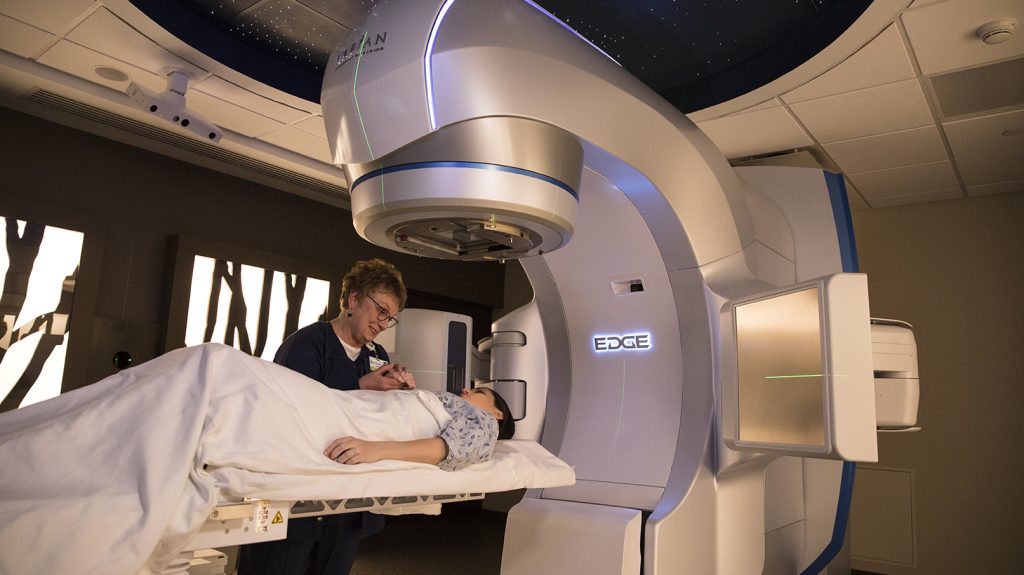A cancer diagnosis can be both confusing and overwhelming. At St. Elizabeth Healthcare, we understand what a challenging time this is for you and your loved ones. We are here to not only offer compassionate and skilled medical care but also support and education to our oncology patients and their families.
What is Radiation Therapy?
According to the National Cancer Institute, radiation is a type of cancer treatment that shrinks tumors and kills or slows the growth of cancer cells with very high doses of radiation.
Radiation Therapy: The Steps
Many times, it helps to know the path ahead. While each patient’s radiation treatment is completely customized to their needs, the process of preparing for radiation is the same.
At St. Elizabeth Healthcare, these steps include:
- Step 1: Consultation – This important visit gives you the opportunity to meet with your St. Elizabeth Radiation Oncology team. It’s an opportunity for you to ask questions and discuss treatment options. You will also undergo a physical exam and review your medical history, current medications and any recent MRI, CT or other imaging tests. This consult visit typically takes around two hours.
- Step 2: Simulation – If your treatment plan includes radiation therapy, you will be scheduled for a simulation (SIM) appointment. A CT scan will be performed in order to outline the exact area that needs to be treated. Your skin will be marked with a marker, helping our radiation therapist to pinpoint exactly where your cancer is located and to reposition you exactly the same way during your first treatment. The SIM appointment typically takes about one hour.
- Step 3: Treatment planning – Your radiation oncologist and care team will use your CT scan images to create a unique treatment plan for you. The goal is to ensure your cancer cells are targeted while keeping the healthy tissue protected.
- Step 4: Radiation – The number of radiation treatments prescribed will vary depending on your type of cancer. A full course of therapy may take several weeks or just one to five days. Treatments are given Monday through Friday and typically the same time each day. Your very first treatment may be scheduled at a special time to allow the therapists to get to know you and the way you need to be positioned. Imaging (X-rays) will be taken during the first treatment on the same machine that will deliver your treatment. These X-rays make sure that you are treated precisely to the site of your cancer. Imaging will also be done routinely during your treatment course for the same purpose. You will see the radiation oncologist at least once each week to make sure you are tolerating the treatments and to answer any questions you may have.
- Step 5: Follow-up – When your course of radiation treatments is completed, you will need follow-up visits with the radiation oncologist. You will be given instructions as to how often you will need to be seen but expect a visit within 4 weeks of completing your radiation.
What are the side effects of radiation?
Fatigue and skin changes are the most common side effects. Radiation therapy only affects the area of the body that is being treated. If you are in discomfort, let your care team know and they will schedule you for an appointment with the doctor or nurse. We want you to be comfortable.
The radiation doesn’t hurt – the only discomfort our patients report is the hard table. Patients undergoing radiation treatment typically can drive home from their treatment; however, if you or your loved one are experiencing fatigue or nausea, we recommend arranging transportation.
For more information about your radiation therapy options, visit St. Elizabeth Radiation Therapy or speak with your radiation oncologist.

